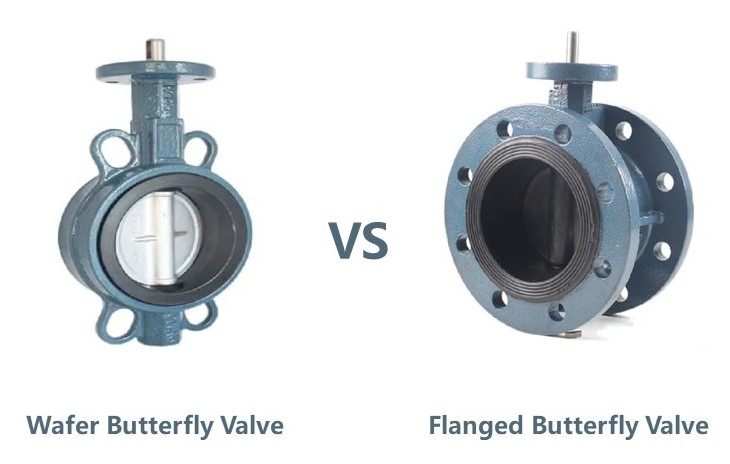Butterfly valves are essential components in fluid control systems, widely used in various industries for their advantages such as simple structure, compact size, lightweight, flexible operation, and easy installation. They are particularly suited for controlling fluid flow, pressure, and direction. Among the commonly used butterfly valves, there are two main types: wafer butterfly valves and flanged butterfly valves.

Different Connection Methods:
Wafer Butterfly Valve: The valve body does not have flanges. It is clamped between two pipe flanges using double-ended bolts. Two flange pieces clamp the butterfly valve, which is then fixed with bolts.
Flanged Butterfly Valve: The valve body has flanges. The valve is connected to the pipe flanges at both ends using bolts.
Different Structures:
Wafer Butterfly Valve: The bolts used are relatively long, and it does not have flanges itself. Therefore, it is generally not recommended to install it at the end of the pipeline or in downstream positions that require disassembly. When disassembling the downstream flange, the wafer valve may fall off, causing both ends of the pipeline to be unable to function properly.
Flanged Butterfly Valve: Due to the valve body having its own flanges, it is securely connected to the pipe flanges. Even if one end is removed, it will not affect the normal operation of the other end of the pipeline.
Different Costs and Construction Requirements:
Wafer Butterfly Valve: The longer bolts used and the requirement for high construction accuracy may cause leakage if the flanges are not properly aligned. However, it is convenient to disassemble and has relatively lower cost. However, if there is an issue with one sealing surface, both sealing surfaces may need to be opened for inspection and repair.
Flanged Butterfly Valve: Although the cost may be slightly higher, the connection is more secure, and the impact range during maintenance is smaller.